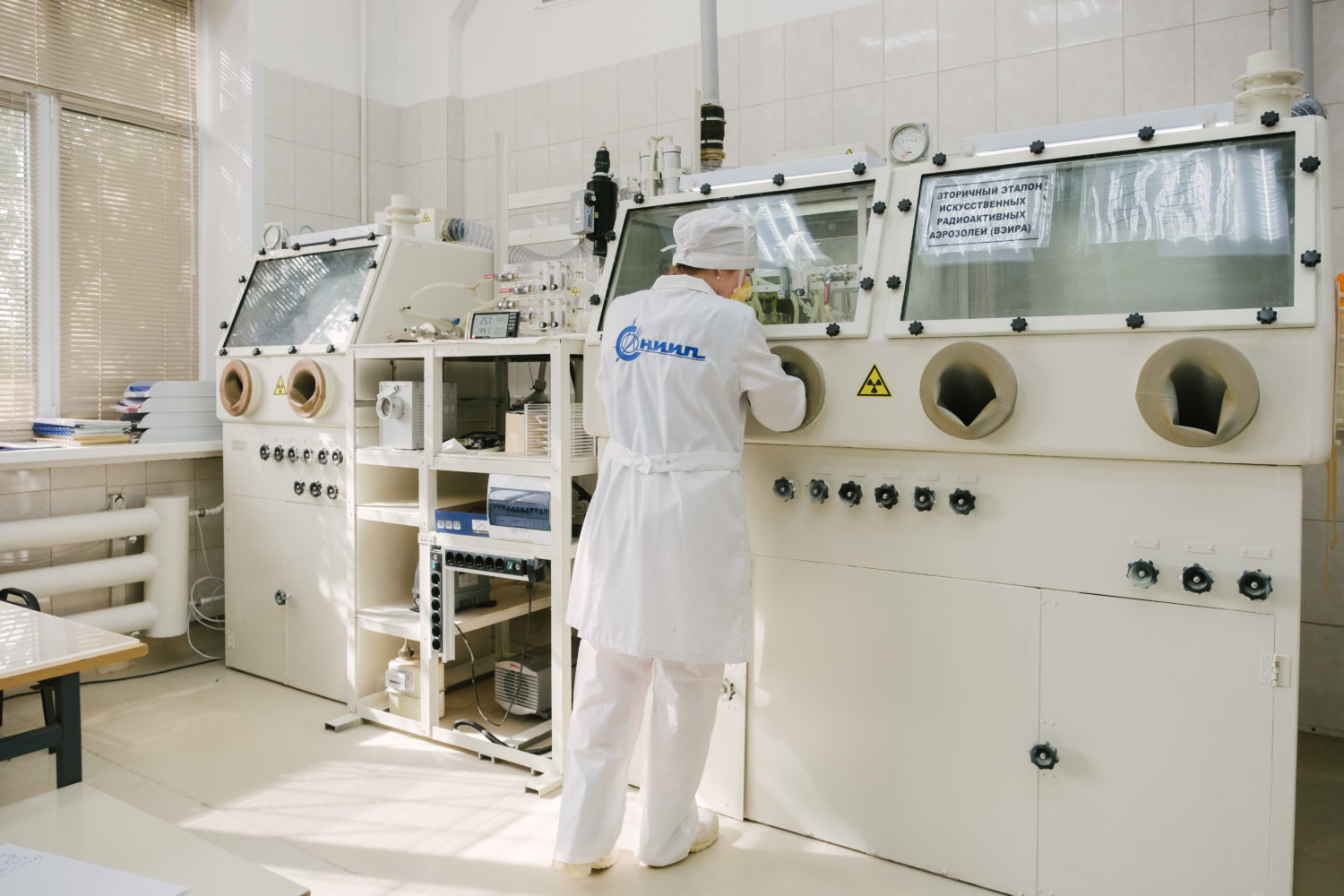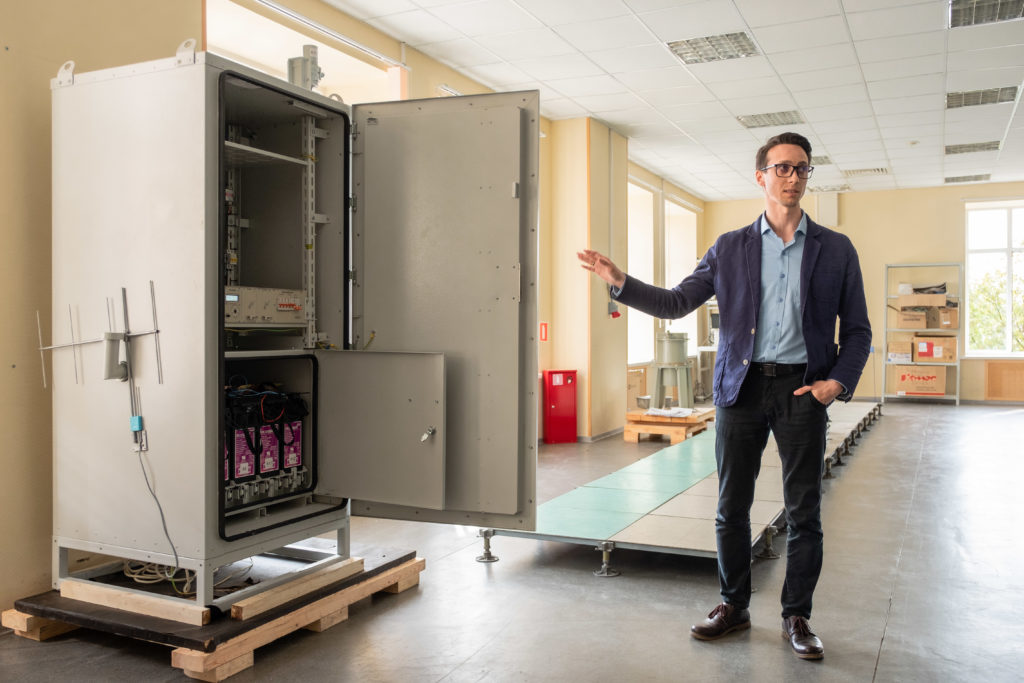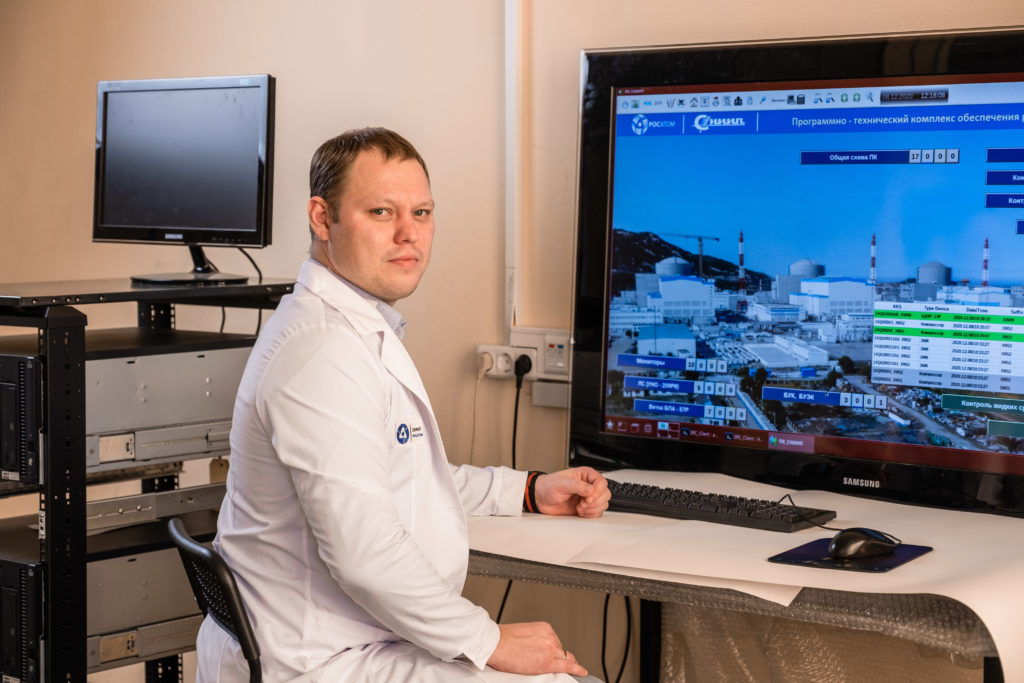
Nervous System for Nuclear Plants
back to contentsIn April, the Research Institute for Instrumentation Engineering (SNIIP), Rosatom’s core metrology company, celebrated its 70th anniversary. It is a subsidiary of Rusatom Automated Control Systems (RASU), Rosatom’s division for I&C systems and electrical engineering responsible for the design and supply of the ‘brain’ and ‘nerves’ — instrumentation, control and monitoring systems — for nuclear power plants in Russia and abroad.
About RASU
Established in 2015, RASU provides a full range of services covering the entire lifecycle of instrumentation and control (I&C) systems used in the nuclear industry and other sectors.
The last year was successful for the company as revenue and orders for new products grew 26 % and 30 %, respectively. In 2021, RASU upgraded IT system of Rostov Unit 1 and supplied balance-of-plant I&C systems for two units of Kursk II in Russia. In the same year, RASU made the first shipments of I&C components for the Rooppur NPP in Bangladesh and Akkuyu in Turkey. Protection relays and electrical equipment for the I&C system were shipped to India for Kudankulam Unit 3.
RASU is proud of having contributed to the equipment of the Belarusian NPP. This is the first Russian-designed nuclear power plant built abroad, which was fitted out with the Russian I&C system. Consisting of about 20 subsystems, it is based on PORTAL (a Russian acronym for ‘licensed software for distributed automation systems’) supervisory control and data acquisition (SCADA) software package, which was in development since early 2000s. It collects, processes and archives data, makes calculations, enables instrumentation and control functions, and synchronizes data bases. PORTAL provides the plant personnel with complete, real-time and reliable information about the condition and performance of the equipment. The first version of PORTAL was installed at Leningrad II. The Belarusian NPP received an upgraded version of the software, with administration processes automated and self-diagnostic tools upgraded.
PORTAL serves as a basis for a high-level block system, which is a supervisory control hub for all I&C subsystems.
RASU also supplied a fully Russian-designed safety system TPTS-SB compliant with all the post-Fukushima safety requirements developed by the IAEA. The key of them is diversification: safety channels should be built on different hardware and software and designed on different principles so that a same-type error would not cause a failure of all the systems of a nuclear plant. In 2020, TPTS-SB received an international certificate of compliance with all the applicable standards. In June 2021, the patent for the safety system was recognized by the European Union. This system will be installed at Rooppur, as well as at El Dabaa.

Electrical engineering is another line of business RASU engages in. For example, the company has certified its low-voltage switchgear (LVS) to international standards. A line of LVS enclosures has been designed and is now produced in Russia. One may think that making an enclosure is simple but it should be remembered, though, that the function of LVS is to control power supply to the equipment, and loss of power to the circulating pumps was a cause of the Fukushima disaster. This is why much attention is paid to the LVS enclosures: they should be resistant to earthquakes; pull-out modules should withstand no less than 400 push-pull cycles; equipment should continue working even at tropical temperatures, and cabinet doors should remain closed even at the short-circuit current of 100 kA — and all this should not come at a price for customers.
About SNIIP
As a key subsidiary of RASU, the Research Institute for Instrumentation Engineering (SNIIP) is responsible for the end-to-end design of complex automated systems for radiation control, radiation monitoring and personal dosimetry.
As mentioned above, on April 19, SNIIP turned 70. Then Central Design Bureau No. 1, the institute was founded in 1952 to design instrumentation systems and devices for the fast-developing nuclear industry. The systems and instruments developed at CBD 1 were installed at the world’s first nuclear power plant in Obninsk, Lenin nuclear icebreaker and Leninsky Komsomol nuclear submarine.
SNIIP has also designed instrumentation systems for space exploration programs. For example, the institute developed scientific apparatus for Sputnik 5 spacecraft that carried two dogs, Belka and Strelka, on board. Later, SNIIP developed Matroshka-R, a tissue-equivalent human phantom. It is a sphere made of a substance most closely imitating human tissues in terms of their composition and properties. The sphere has dosimeters installed at different depths corresponding to those of different organs in the human body. The sensors measure the radiation exposure and effect on the tissues. This is important because astronauts are not protected from radiation by the atmosphere, so health risks are much higher. Matroshka-R ‘lives’ on the International Space Station.

The solutions developed by SNIIP are used at Rostov, Kalinin, Beloyarsk NPPs and Novovoronezh II NPP, at the Tianwan, Akkuyu, and Rooppur NPPs, at the Akademik Lomonosov FPU and nuclear icebreakers.
SNIIP has a backlog of orders until 2030 for different SCADA systems.




